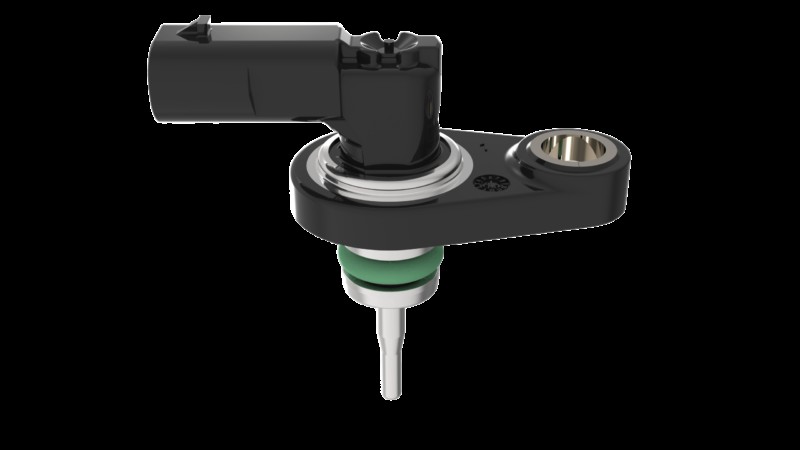The Intake Air Temperature (IAT) sensor, often referred to as the Air Temperature Sensor, plays a crucial role in modern vehicle engine management systems. This sensor is responsible for measuring the temperature of the air entering the engine’s intake manifold. But What Does Intake Air Temperature Sensor Do exactly, and why is it so important?
At its core, the intake air temperature sensor provides critical data to the engine control unit (ECU), the brain of your car’s engine. The ECU uses this temperature information, along with readings from other sensors, to optimize engine performance. Internal Combustion Engines (ICEs) operate most efficiently when the air-fuel mixture is precisely controlled, and air temperature is a key factor in achieving this balance.
Valeo, as a leading automotive supplier, understands the importance of accurate and reliable air temperature sensing. Our compact temperature sensors are engineered to ensure precise control over thermal engine behavior, particularly within the air loop, from the intake to the Exhaust Gas Recirculation (EGR) system. This accuracy is paramount for effective engine management, robust diagnostics, and essential thermal protection.
The Significance of Intake Air Temperature
So, what does intake air temperature sensor do that makes it so vital? The temperature of the intake air directly affects the air density. Colder air is denser and contains more oxygen per unit volume than warmer air. The ECU needs to know the intake air temperature to calculate the correct amount of fuel to inject for optimal combustion.
Here’s a breakdown of the key functions:
- Fuel Mixture Adjustment: The primary function of the IAT sensor is to inform the ECU about the intake air temperature so it can adjust the air-fuel ratio. When the intake air is cold, the ECU will richen the fuel mixture (add more fuel) to match the denser air. Conversely, in warmer conditions, the ECU will lean out the mixture (reduce fuel) to compensate for the less dense air. This precise adjustment is crucial for efficient combustion, fuel economy, and reduced emissions.
- Ignition Timing Optimization: Intake air temperature also influences ignition timing. Colder air allows for more aggressive ignition timing, which can improve engine power and responsiveness. The IAT sensor data helps the ECU optimize the ignition timing for varying air temperatures, maximizing engine performance across different conditions.
- предотвращение Detonation (Knocking): High intake air temperatures can increase the risk of engine knocking or detonation, a damaging condition that occurs when the air-fuel mixture ignites uncontrollably. By monitoring intake air temperature, the ECU can retard ignition timing or adjust the fuel mixture to prevent knocking and protect the engine.
- EGR System Control: In vehicles equipped with Exhaust Gas Recirculation (EGR) systems, the IAT sensor also plays a role. The EGR system recirculates a portion of exhaust gas back into the intake manifold to reduce combustion temperatures and NOx emissions. The ECU uses IAT sensor data, among other inputs, to control the EGR valve operation effectively.
- Diagnostic Purposes: The IAT sensor is also crucial for vehicle diagnostics. If the sensor malfunctions or provides incorrect readings, it can trigger a check engine light and store diagnostic trouble codes (DTCs). These codes can help technicians diagnose issues related to the intake air temperature sensor or the engine management system.
Valeo Air Temperature Sensors: Engineered for Performance
Valeo Air Temperature Sensors are designed to deliver superior performance and reliability, ensuring optimal engine management in diverse driving conditions. Key benefits of Valeo sensors include:
- Fast Response Time: Our sensors offer rapid response times, crucial for accurate air intake and EGR flow calculations, as well as effective thermal protection. This quick response ensures the ECU receives real-time temperature data for immediate adjustments.
- Low Temperature Diagnostic Feasibility: Valeo sensors are designed for reliable diagnostics even at low temperatures, ensuring accurate readings in cold climates.
- Robust Design: Featuring a closed stainless steel tip, Valeo sensors are resistant to exhaust and EGR gases, ensuring longevity and consistent performance in harsh engine environments.
- Easy Installation: Copper captive gaskets facilitate low tightening torque and provide high corrosion resistance, simplifying installation and ensuring a durable connection.
- Connector Flexibility: Adjustable connector definitions, including MLK 1.2 availability, offer flexibility to meet various vehicle manufacturing requirements.
Technical Specifications
Valeo Air Temperature Sensors are built to withstand demanding automotive applications, with specifications including:
- Temperature Range: -40°C up to +300°C
- Operating Temperature: -40°C up to +170°C
- Peak Temperature Resistance: +350 °C for up to 5 hours
- Temperature Response Time: < 8 seconds at 11 m/s (from +50°C to +300°C)
- Temperature Accuracy: ± 2°C up to +200°C and ± 5°C at +300°C (at new)
Wide Range of Vehicle Applications
Valeo Air Temperature Sensors are suitable for a broad spectrum of vehicles, including:
- Passenger Cars
- Buses
- Trucks
- Robot taxis
- Motorcycles
- Bikes
- Off-road vehicles
In conclusion, understanding what does intake air temperature sensor do highlights its critical role in modern engine management. It is a small but vital component that directly impacts engine efficiency, performance, emissions, and diagnostics. Valeo’s Air Temperature Sensors are engineered to provide the accuracy and reliability needed to ensure optimal engine operation across diverse vehicle types and driving conditions.
[
Powertrain Electrification Sensors
Battery Thermal Runaway Sensor
Discover ](https://www.valeo.com/en/catalogue/pts/battery-thermal-runaway-sensor/)
[
Conventional Powertrain, Powertrain Electrification Sensors
Fluid Pressure & Temperature Sensor
Discover ](https://www.valeo.com/en/catalogue/pts/fluid-pressure-temperature-sensor/)
[
Conventional Powertrain, Powertrain Electrification Sensors
Exhaust Gas Temperature Sensor
Discover ](https://www.valeo.com/en/catalogue/pts/exhaust-gas-temperature-sensor/)
[
Powertrain Electrification Sensors
Electric Motor Position Sensor (iPSU)
Discover ](https://www.valeo.com/en/catalogue/pts/electric-motor-position-sensor-ipsu/)
